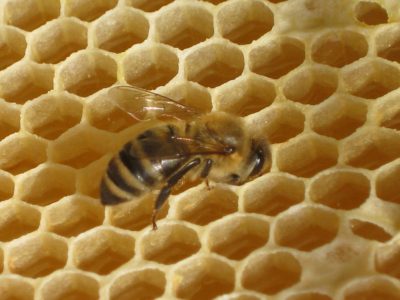
What You Don’t Know About Beeswax Processing, But Really Ought To
When I first started formulating my first personal care products, I started with face creams. After a few trials and errors, I was stunned. The feel of the all natural, preservative free, chemical free cream on my face was amazing. I was sad I started with such a small batch, and I immediately made a bigger one.
I shared it with family and friends, and bragged about my skills. Even started to reduce my hatred towards my student loans, after all, the education did come in handy for making these kinds of products.
Then I ordered more raw ingredients and made another batch. This one looked a little different. I was worried. Were the first batches a result of a glitch? A mistake I couldn’t repeat? I re-read my notes and double checked my numbers. Something must have been wrong. I applied it anyway, and to my relief, the amazing soft feel of my new personal face cream was still there. The cream just looked a little different.
But why?
My scientific mind went to overdrive to figure out what happened. I made another batch, and another, and another. I shared with family and friends, most of whom didn’t notice the color, the change in aroma, the other slight inconsistencies. But a few did.
The more I made and the more I tested, the more I realized that I will never have perfectly consistent results, though I finally figured out why.
The answer is simple, yet so complicated.
I will never have consistent results because my raw ingredients are not consistent. One might think that olive oil is olive oil, and it is, but how it’s processed (cold pressed, virgin, extra virgin, etc.) is what makes the final product look, smell, taste, and feel the way it does. Most major producers have mastered the art of making their products consistent from batch to batch, but at what cost? And for whose benefit?
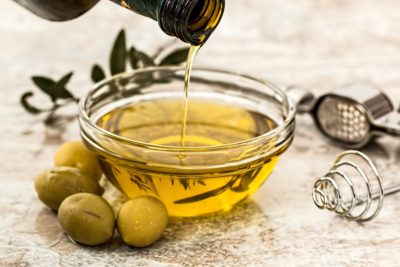
First, let’s talk about beeswax. Beeswax comes from different places. Consistency will vary based on what the bees fed on, what season it is, temperature, locale, and even based on the species of bee that produce it.1 If you’re interested in learning how bees produce beeswax, I found a great article on this process here (what a task!).
I learn something new everyday! Today I learned that there are nectar that bees can feed on but will produce toxic honey to humans!2 Wow!
I generally get my beeswax locally if I can. Sometimes I have to filter my own based on what’s available. But I don’t go to the same beekeeper every time. Some small beekeepers just don’t have enough to meet my demand, so I go to several beekeepers that meet my high standards of how they raise their bees and what processes are used to filter the beeswax.
None of their beeswax is the same, some are darker, some are lighter. Some are more filtered than others. Some I have to re-filter, and some I don’t. It all varies, and sometimes I don’t know what I’ll be getting in my next batch. But I continue this practice because I believe in supporting our American farmers, beekeepers, hard working people. I also do this because there is limited information available about the processes used in commercial beeswax. This information is important because some of these processes can be harmful, and dealing with local bee keepers not only allows me to see their setup for myself, but also allows me to ask my long list of questions.
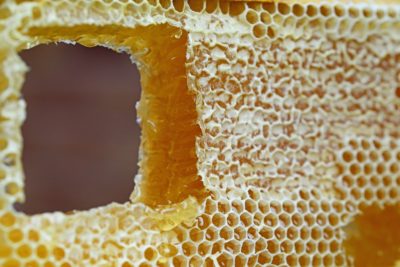

As a side note, the inconsistencies in raw ingredients are not limited to beeswax. I recently switched to a superior quality rose hip seed oil. This is the main ingredient in my soon to be famous L’Crème.

The rose hip seed oil I used to get was very good quality, but I did some research and found a better oil that is raw in comparison to my previously processed one. The aroma is stronger and slightly different, and the color is much darker. I compared my old and new L’Crème’s and saw a huge color difference.
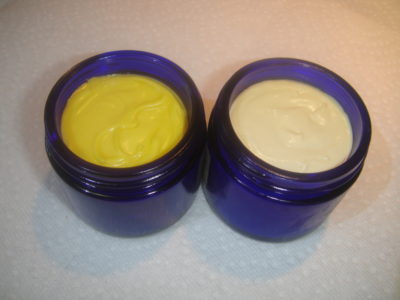
This immediately had me worried. So many of my customers are used to the original oil in the L’Crème. Will they think I lowered the quality when they see the new color? Then panic set in and I questioned myself, is the new rose hip seed oil going to change the consistency? The feel? The results? I immediately sent out samples to family and friends for testing, and the results were favorable. They liked the new darker cream. No difference in how it applies (for those that keep it refrigerated as they should), nor does it make their skin appear darker. They love it just as much as the old one, only one person complained that they could no longer keep their cream out at room temperature (you’re not supposed to!). Some even noticed better results in their skin. Yay.
Don’t get me wrong, the recipe has not changed. The color and aroma has, all because I changed two variables. I switched to a rose hip seed oil that I researched to be superior to the old one, and I changed beeswax, again. The beeswax will always change, and while I try to keep all my raw ingredients consistent, reality is that is not possible if I want to continue making products from the freshest and purest of raw ingredients.
But this very detail brings me to question what tactics major manufacturers use to keep their products consistent. Especially those that use beeswax as an ingredient.
After doing some research, I learned that beeswax is actually clear when first made by the bees, and the color is added over time due to incorporation of pollen and propolis.3 Often the starting besswax that needs to be filtered is a dark yellow to orange, not clear, and full of propolis, sometimes honey, and other natural contaminants.
Most bee keepers filter their beeswax simply by using heat and gravity. I try to support those bee keepers, because I think that’s the most natural way to filter. If I have to filter my own, I do so using a double boiler and a fine mesh filter similar to this one.
Not an easy or perfect process. I first leave it in hot water in a designated beeswax double boiler overnight, and sometimes I still have to re-melt the beeswax in the morning in hot water to filter out the rest of the propolis. But I feel good knowing I’m not adding any toxic chemicals or using any toxic processing aids.
When it comes to commercial processing, the natural processing methods usually end here. From here, depending on what the manufacturer desires, the beeswax is altered to meet their needs. There are a variety of ways to alter the beeswax, such as adding mineral oil or vegetable oil to change the consistency and make it easier to work with. Mineral and vegetable oils don’t sound so bad.
But let’s talk about beeswax used for cosmetics, such as many lotions. In order to keep the final product consistent, the beeswax has to be purified in some way, and often times it is done so by the process of bleaching. Bleaching sounds innocent enough? Not so.
There are three most common types of beeswax after purification, bleaching, or whatever you want to call the process. These are “yellow”, “white” and “absolute”. The yellow is supposed to be natural beeswax, the white is supposed to be bleached yellow beeswax, and the absolute is just supposedly treated with alcohol.
Still sounds innocent right?
When I first researched how beeswax is bleached, I read that you can leave it out in the hot sun and it will bleach that way. Okay, that sounds natural, but who has time for that? No major manufacturer does. They need their raw ingredients in large quantities, and they need them now. I know when I’m filtering beeswax, I have to set aside a couple days that are devoted to nothing but the beeswax.
So I delved further into the research, as I knew based on my personal experience in working with filtering beeswax that keeping a complicated wax such as beeswax consistent throughout mass production required more than an all natural process. And I was right.
The Beekeeper’s Choices of a Bee’s Environment
First, there is the consideration of how the bees are raised. Bees are not immune to diseases, and how beekeepers handle pathological problems can vary. It’s too much to discuss for the scope of this article, but know that beekeeping can mean using chemicals that are not exactly friendly to you, I, or our planet.
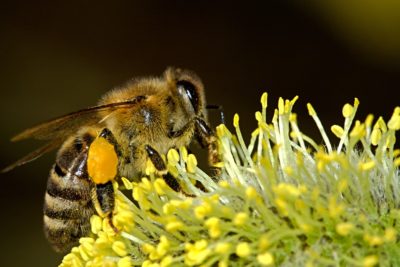
For example, Sulfur, acetic acid, and formic acid are used to control moths that would otherwise damage the wax.4 According to this book, if the comb is immediately removed and melted, you can prevent a moth problem that way. Yes, the bees have to work harder to build another comb, but at least they are not sprayed with nasty chemicals, nor are they affected by disease.
Pollen, which the bees collect and use for all their created wonders, can be easily contaminated by pesticides and other pollutants. According to this paper, it is recommended that pollen collected by bees should be at least 3km away from traffic or other areas that could be contaminated.5 This is no easy task, since most county roads are sprayed by herbicides to prevent weeds from taking over the roads. That means your bees and their pollen source must be at least 3km away from a county road or other congested areas.
Heavy metals can also accumulate in beeswax foundations which are often necessary in intensive bee keeping. This research article “Variations in lead, cadmium, arsenic, and mercury concentrations during honeybee wax processing using casting technology” discusses the analysis of such and potential alternatives to prevent it.6
Not only is the beeswax affected by how bees are raised, but so is the honey you eat. The following research shows that contamination in honey is very much possible, and if contamination occurs in honey, you can bet it’s going to be present in beeswax:
“The highest residues of pesticides are from varroacides that accumulate in beeswax, pollen, and bee bread and their residue levels increase from honey to pollen to beeswax”
“reviewed different studies carried out on organochlorine pesticides residues in honey; the levels found in different countries differed considerably” Different countries listed in this articles showed different high amount of pesticides, acaricides, and fungicides found in honey that were used in those specific countries.
Organic contaminants and polychlorinated biphenyl (PCB’s), which originate from motor oil, coolants, and lubricants, are still present in the environment and can contaminate bees and their products. The quantities in honey are low while those in wax are high.7
And here is additional research on the contamination of beeswax.8
There are numerous considerations when it comes to the bee’s life when making honey combs, but I’ll return to focus on the filtration of beeswax for now.

Filtering the Beeswax
It kind of seems like the commercial producers who are using chemical bleaching and chemical purification of beeswax are not talking much about it. Fortunately, contamination of the wax seems to be getting more attention, both in the scientific community and in the press.
Chemical methods for bleaching beeswax are neither rare nor shared easily. Patents on the process exist such as this one.9 This peer reviewed paper makes it sound like the melting/double boiler method is the most common, but that chemical extraction can also be used. If the chemical method is used, gasoline and xylene are used as solvents.10
Gasoline is not something I want in my skin care products, and since it’s used as a processing aid, it doesn’t necessarily have to be disclosed.
Xylene is a petrochemical that is also known as xylol or dimethylbenzene.11 When researching xylene and toxicity, I found numerous scientific studies such as this one showing that xylene is quite toxic.12
Some of the chemicals that can be used to aid in production such as bleaching the wax to make it a nice color, include sulfuric acid, oxalic acid, or concentrated citric acid. Also used are hydrogen peroxide, potassium permanganate as well as gasoline and xylene (as noted earlier) which are used in chemical extraction as noted in this very thorough beeswax production book.13
Sulfuric acid is a highly corrosive strong mineral acid. This stuff burns skin.14 Not sure how anyone came up with this brilliant idea of using the corrosive acid for filtering beeswax, but someone did, and so it is used as such.
Oxalic acid is found in low concentrations in a variety of natural plants and can be prepared by a variety of reactions, but when highly concentrated, it can be quite harmful.15 What concentration remains in the beeswax is unknown to me.
I discovered a very common additive is Carbon Tetrachloride (CCl4) which allows the melted liquid wax to flow more readily through a filter.16
Carbon tetrachloride, also known by some names such as tetrachloromethane, carbon tet, Halon-104, and Refrigerant-10 is an organic compound that is identified with the chemical formula of CCl4. It is usually made from methane, it used to be used as a cleaning agent and in fire extinguishers. It also used to be used as a solvent in chemistry application, but no longer is due to the toxic effects on human health.17
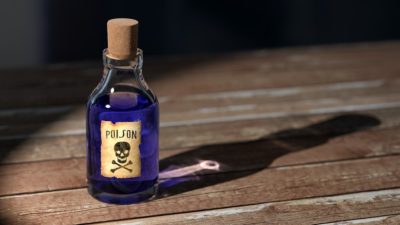
Different companies will employ different methods. Some will use volatile compounds such as CCl4, or other volatile compounds such as gasoline or xylene to be able to filter quickly and efficiently. Some do use a natural process such as melting and using a pressure filter. Fortunately with beeswax, just getting the particulate out will result in a more consistent beeswax from batch to batch. This means that many of these chemicals are actually unnecessary except when you need fast, perfect, and consistent results every time.
Another very common filtration media that is used to filter out chemicals is activated charcoal,18 but I couldn’t find any data to show how much of the chemical contaminants the activated charcoal will remove, nor could I find data on the residual chemicals that are left behind because they were missed in filtration.
Other considerations that I couldn’t find much data on is what type of containers were used in the process of filtering the beeswax, even when done so naturally. a Teflon non-stick pot? Aluminum? Stainless steel as I would prefer? I realized that this information is not readily available when it comes to the purchase of the final “raw” ingredient, and one must spend many hours researching, questioning, and deciding who would be their least toxic supplier of their beeswax and other ingredients.
Conclusion
One can easily get lost in the details and the endless hours of research of the processes it takes for our “raw” ingredients to make it to our kitchens. The deeper you delve, the scarier it gets sometimes. We live in a society where large storage containers have warning signs not to put your children in them, but toxic chemicals knows as processing aids don’t have to be disclosed. Nor does it require research to show safety. Even if there is ample research to show that certain chemicals are toxic and can lead to cancer, no rules exist that say you can’t use them or put them in personal care products.
While many other countries have accepted the research and made many toxic chemicals illegal to use, here in America, it’s left up to the individual to do their own diligent research to make sure the products they buy are safe for them and their family. And who has time for such work? I spent weeks researching and writing this article and I feel like I’ve only scratched the surface.
Thus, here at Nature’s Complement, we strive to maintain our traditions of safe products. All our ingredients are thoroughly researched. Our producers questioned, and our disclosures up front and honest. What we don’t maintain however, is consistency between products. The final products will not change without informing you, but we will continue to strive to improve the raw ingredient that we start with.
As the old saying goes, you get what you pay for. But here at Nature’s Complement, you’re not paying for consistency that could potentially be harmful to your health, you’re paying for high quality products that are safe and effective.
For Health,
Tober
References Cited:
1Available at: ftp://ftp.fao.org/docrep/fao/012/i0842e/i0842e12.pdf. Accessed January 4, 2017.
2Available at: https://www.ncbi.nlm.nih.gov/pmc/articles/PMC3477659/table/tab2/. Accessed January 4, 2017.
3Wikipedia, the free encyclopedia. Beeswax. Available at: https://en.wikipedia.org/wiki/Beeswax. Accessed January 4, 2017].
4Available at: https://www.researchgate.net/publication/304012435_Beeswax_Production_Properties_Composition_Control. Accessed January 4, 2017.
5Available at: https://www.apimondia.com/apiacta/articles/2003/bogdanov_1.pdf. Accessed January 4, 2017.
6Tlak gajger I, Kosanović M, Bilandžić N, Sedak M, Čalopek B. Variations in lead, cadmium, arsenic, and mercury concentrations during honeybee wax processing using casting technology. Arh Hig Rada Toksikol. 2016;67(3):223-228.
7Available at: https://www.ncbi.nlm.nih.gov/pmc/articles/PMC3477659/. Accessed January 4, 2017.
8Available at: https://www.apimondia.com/apiacta/articles/2003/bogdanov_1.pdf. Accessed January 4, 2017.
9Available at: https://www.google.com/patents/US2108282. Accessed January 4, 2017.
10Available at: https://www.researchgate.net/publication/237411324_Beeswax_Production_Properties_Composition_and_Control. Accessed January 4, 2017.
11Wikipedia, the free encyclopedia. Xylene. Available at: https://en.wikipedia.org/wiki/Xylene. Accessed January 4, 2017].
12Wang F, Liu F, Liu H, Chen W, Si X, Ma X. Effects of immunological and hematological parameter in mice exposed to mixture of volatile organic compounds. Inhal Toxicol. 2016;28(4):164-9.
13Available at: https://www.researchgate.net/publication/237411324_Beeswax_Production_Properties_Composition_and_Control. Accessed January 4, 2017.
14Wikipedia, the free encyclopedia. Sulfuric acid. Available at: https://en.wikipedia.org/wiki/Sulfuric_acid. Accessed January 4, 2017].
15Wikipedia, the free encyclopedia. Oxalic acid. Available at: https://en.wikipedia.org/wiki/Oxalic_acid. Accessed January 4, 2017].
16Available at: http://dave-cushman.net/bee/waxfiltration.html. Accessed January 4, 2017.
17Wikipedia, the free encyclopedia. Carbon tetrachloride. Available at: https://en.wikipedia.org/wiki/Carbon_tetrachloride. Accessed January 4, 2017].
18Available at: http://dave-cushman.net/bee/waxdecont.html. Accessed January 4, 2017.
Nature's Complement is a participant in the Amazon Services LLC Associates Program, an affiliate advertising program. If you purchase products on Amazon through any of our affiliate links, we get a small percentage of the transaction, at no extra cost to you. We spend a lot of time writing the articles on this site, and all this information is provided free of charge. When you use our affiliate links, you support the writing you enjoy without necessarily buying our products. (However we would appreciate if you would do that too!) Thank you for helping to support our work, however you choose to do so.
These statements have not been evaluated by the Food and Drug Administration. This information and/or products are not intended to diagnose, treat, cure or prevent any disease.


